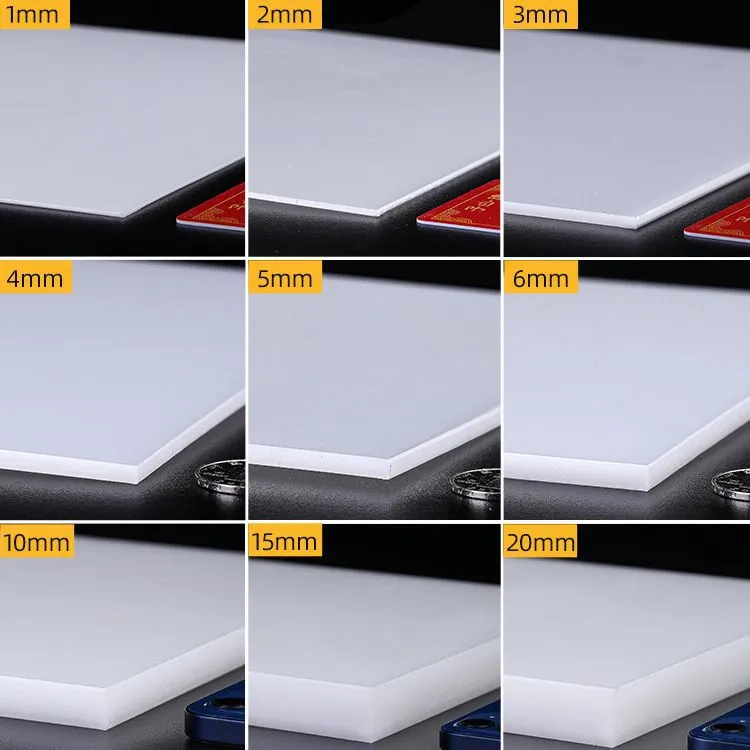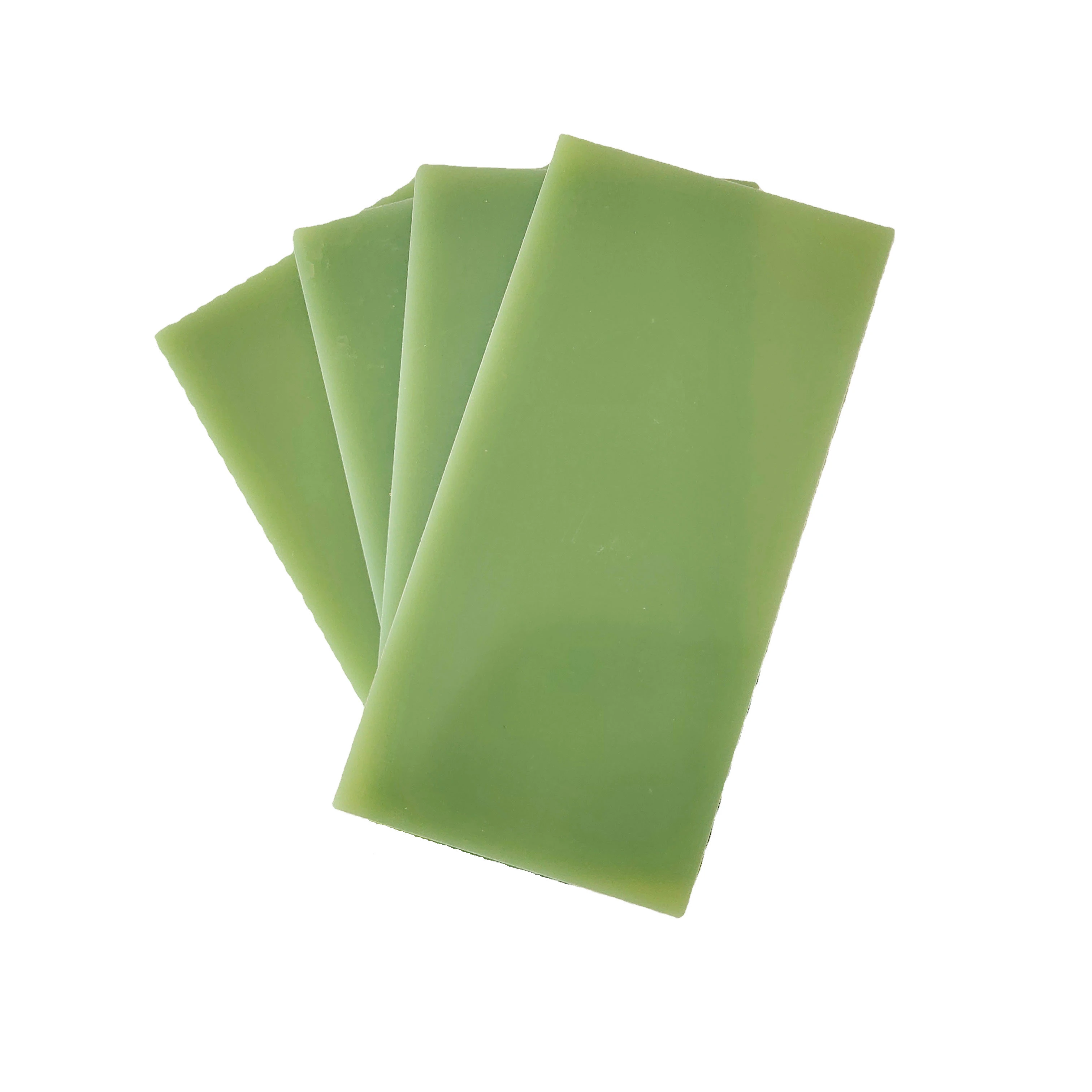What are the disadvantages of PP plastic?
2024-10-12 17:00:52
Polypropylene (PP) is a versatile thermoplastic polymer widely used in various industries, including the production of PP plate sheets, polypropylene boards, and PP plastic sheets. While PP offers numerous advantages, it's essential to understand its limitations to make informed decisions about its use. This comprehensive guide explores the disadvantages of PP plastic, providing valuable insights for manufacturers, consumers, and industry professionals.
Environmental Concerns Associated with PP Plastic
Despite its widespread use, PP plastic poses several environmental challenges that warrant consideration:
Biodegradability Issues
PP plastic is not biodegradable, which means it can persist in the environment for hundreds of years. When PP plate sheets or polypropylene boards are discarded, they contribute to long-term pollution in landfills and natural ecosystems. The slow decomposition rate of PP plastic exacerbates the global plastic waste crisis, leading to accumulation in oceans and terrestrial environments.
Recycling Challenges
While PP plastic is technically recyclable, the process is often complex and costly. Many recycling facilities lack the necessary equipment to efficiently process PP plastic sheets, resulting in a significant portion ending up in landfills or incineration plants. The low recycling rates for PP plastic contribute to resource depletion and increased environmental impact.
Energy-Intensive Production
The manufacturing of PP plastic, including PP plate sheets and polypropylene boards, requires substantial energy inputs. The energy-intensive production process contributes to greenhouse gas emissions and climate change. As sustainability becomes increasingly important, the high carbon footprint associated with PP plastic production is a growing concern for environmentally conscious consumers and businesses.
Performance Limitations of PP Plastic
While PP plastic offers numerous benefits, it also has several performance limitations that can affect its suitability for certain applications:
Temperature Sensitivity
PP plastic is known for its versatility, but it struggles in low-temperature environments. At colder temperatures, PP becomes brittle, increasing the risk of cracking and failure. This vulnerability restricts its use in applications where temperatures fluctuate frequently, such as in cold storage or outdoor settings. As a result, industries that demand materials with reliable performance across a broad temperature spectrum may need to consider alternatives to polypropylene to ensure durability and functionality.
UV Degradation
Extended exposure to ultraviolet (UV) radiation significantly affects polypropylene (PP) plastic, resulting in issues like discoloration, brittleness, and diminished mechanical strength. This inherent UV sensitivity restricts the use of PP plastic sheets in outdoor environments, particularly in areas with intense sunlight. To mitigate these effects, manufacturers often incorporate UV stabilizers, which can raise production costs and complicate recycling processes. Consequently, industries seeking durable materials for outdoor applications may need to weigh these factors carefully when choosing PP.
Chemical Resistance Limitations
Polypropylene (PP) plastic is recognized for its overall good chemical resistance; however, it does have notable limitations. Exposure to specific solvents, oils, and strong oxidizing agents can lead to significant degradation, compromising the material’s integrity. This susceptibility restricts the use of PP plate sheets and boards in various industrial and chemical processing applications, where contact with aggressive substances is routine. As a result, industries may need to consider alternative materials that can better withstand harsh chemical environments.

Manufacturing and Processing Challenges
The production and processing of PP plastic present several challenges that can impact its overall performance and cost-effectiveness:
Shrinkage and Warping
PP plastic is prone to shrinkage and warping during the cooling process, which can lead to dimensional instability in finished products. This characteristic makes it challenging to maintain precise tolerances in PP plate sheets and polypropylene boards, potentially affecting the quality and performance of end-use applications. Manufacturers must implement careful process control measures to mitigate these issues, which can increase production costs.
Bonding Difficulties
PP plastic has a low surface energy, making it difficult to bond with adhesives or other materials. This property complicates the production of composite structures or multi-material assemblies involving PP plastic sheets. Special surface treatments or specialized adhesives are often required to achieve adequate bonding strength, adding complexity and cost to manufacturing processes.
Printing and Decoration Challenges
The low surface energy of PP plastic also presents challenges in printing and decorating PP plate sheets and polypropylene boards. Standard inks and coatings may not adhere well to the material's surface, requiring specialized treatments or additives to achieve satisfactory print quality and durability. These additional steps can increase production time and costs, potentially limiting the aesthetic options for PP plastic products.
Conclusion
In conclusion, while PP plastic offers numerous advantages, it's crucial to consider its disadvantages when selecting materials for specific applications. The environmental concerns, performance limitations, and manufacturing challenges associated with PP plastic highlight the need for ongoing research and development in alternative materials and recycling technologies. By understanding these limitations, manufacturers and consumers can make more informed decisions about the use of PP plate sheets, polypropylene boards, and PP plastic sheets, balancing performance requirements with environmental responsibility and cost-effectiveness.
Contact Us
If you're seeking high-quality insulating sheets or require more information about PP plastic and its alternatives, don't hesitate to reach out to our team of experts. With over 20 years of experience in producing and selling insulating sheets and a decade of international trading expertise, we're well-equipped to provide comprehensive solutions tailored to your specific needs. Contact us today at info@jhd-material.com to explore how we can support your projects with our extensive knowledge and premium products.
References
1. Thompson, R. C., et al. (2009). "Plastics, the environment and human health: current consensus and future trends." Philosophical Transactions of the Royal Society B: Biological Sciences, 364(1526), 2153-2166.
2. Geyer, R., Jambeck, J. R., & Law, K. L. (2017). "Production, use, and fate of all plastics ever made." Science Advances, 3(7), e1700782.
3. Andrady, A. L., & Neal, M. A. (2009). "Applications and societal benefits of plastics." Philosophical Transactions of the Royal Society B: Biological Sciences, 364(1526), 1977-1984.
4. Hopewell, J., Dvorak, R., & Kosior, E. (2009). "Plastics recycling: challenges and opportunities." Philosophical Transactions of the Royal Society B: Biological Sciences, 364(1526), 2115-2126.
5. Lithner, D., Larsson, Å., & Dave, G. (2011). "Environmental and health hazard ranking and assessment of plastic polymers based on chemical composition." Science of The Total Environment, 409(18), 3309-3324.
6. Ragaert, K., Delva, L., & Van Geem, K. (2017). "Mechanical and chemical recycling of solid plastic waste." Waste Management, 69, 24-58.




_1747991245292.webp)


